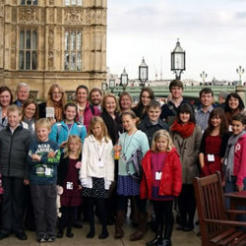One of the first existing charities to convert to a Charitable Incorporated Organisation has already decided to dissolve its CIO status after realising that it would have to change all its communications materials to incorporate its new CIO registration number.
And a second charity that has now been a CIO for almost three months has said that the requirement to transfer assets from the old organisation to the new has thrown up a few problems, particularly with regard to multi-year grants and proving a track record to new funders.
Forces Children’s Trust (pictured), one of ten existing charities that have converted to the CIO structure since applications opened to that group three months ago, has decided not to proceed after realising it would be given a new CIO registration number to replace its registered charity number, and would need to change all its marketing resources to display this.
Denny Wise, its founder and CEO, told civilsociety.co.uk: “When a charity becomes a CIO it gets a new number. The old charity number remains for a couple of months to allow the charity to make the transition.
“It’s confusing for the public,” he said, “and would mean we would have to change all our literature such as leaflets and collection tins, with the new number. It’s so much work for a charity unless you are newly-registered and get one number.
“In principle the CIO is a fantastic idea but it makes no sense to change our charity number after ten years in existence. Our supporters are very loyal and know our number.”
Challenge to Change: asset transfer complicated
Challenge to Change was first existing unincorporated association to be registered as a CIO, on 4 March 2013. Based in Kent, it is an international NGO that helps people in Vietnam to deal with the effects of climate change.
Graham Adutt, director of Challenge to Change, said his charity was attracted to the CIO form by the provision of limited liability for trustees. However, he said the process of transferring assets from the old organisation to the new was “a bit more complicated than we’d thought”.
Because the charity has a number of multi-year grant agreements with institutional donors, it had to explain to them all that the grants would be transferring to a new legal entity mid-term. “Some have been ok about it but others have been a bit more difficult,” he said.
The other issue was trying to prove the charity’s provenance when applying for new grants: “The new organisation has no history, no track record, so you have to explain to a new donor that they need to look at the financial records of a different legal entity.”
Allowed to convert despite late accounts
Challenge to Change was allowed to convert to the CIO structure despite not having yet filed its latest accounts with the Commission. Its accounts for the year to 31 December 2011 are still not received, and are now 211 days overdue, and the previous year’s accounts were submitted 533 days late. The charity’s entry on the Commission’s online register sports a red border.
A Charity Commission spokeswoman said: “I can confirm the charity is overdue with their 2011 set of accounts. This was an issue identified during the registration process, however late accounts do not impact the legal status of a charity that continues to operate, as a charity is prescribed by the Charities Act.
“The Commission requested and received proof of the charity’s income before registering the charity.”
Graham Adutt said the accounts were late because the charity was tiny with just one full-time UK staff member - himself, and he had recently spent six months in Vietnam and was still catching up with admin. “My background is in fieldwork and we are just not very enthusiastic about things like that, they tend to be put on the back-burner,” he admitted.
13 applications from larger charities
Ten unincorporated charities with income of more than £250,000 have now converted to become Charitable Incorporated Organisations (CIOs), and a further three have applied.
Other existing larger charities to have converted include Oxfordshire Youth, Council for Cadet Rifle Shooting, and the Merseyside, Cheshire and Greater Manchester Teacher Training Consortium.
The biggest so far is the Royal Navy and Royal Marines Charity, which has become Dames Agnes Weston’s Royal Charity for the Naval Service. It had income of £14.4m in its last financial year and spent £6m.
76 CIOs now registered
According to the Charity Commission spokeswoman, a total of 76 CIOs are now registered and a further 216 applications are being processed – though some of these have been wrongly submitted as CIO applications when in fact the applicants just wanted charitable status.
However, a search of the online Register of Charities shows that 221 CIOs are already registered. The Commission spokeswoman said the figures she provided are only updated monthly.
The CIO legal form came into effect at the start of the year but for the first two months only new organisations could apply. From early March it became possible for existing unincorporated charities, with incomes of over £250,000, to apply to convert, and from the start of May existing charities with turnover of £100,000 to £250,000 could apply. The Commission has received 14 applications from this income bracket; three have been registered.
In July, charities with incomes of between £25,000 and £100,000 will become eligible to apply.
The Charity Commission said the number of registration applications per month was “in line with our expectations”.
Registering as a CIO allows an organisation to avoid dual regulation by Companies House and the Charity Commission, as it is only subject to Charity Commission oversight. It can also enter into contracts with no or limited liability for trustees.
Additional reporting by Vibeka Mair









